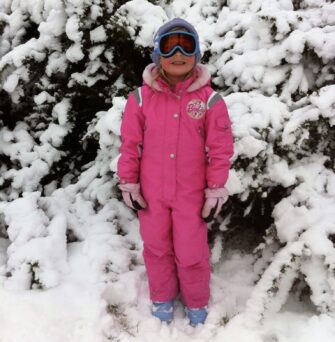Ski lifts are closing across Europe as ski season ends, and it’s time to pack away the ski kit in storage for another year.
Most of us are saying au revoir to our ski jackets and salopettes, and packing them away for the summer. Smart skiers take time to put their ski kit into storage properly for an efficient return to the slopes next season.
Follow these end of season ski kit storage tips to make life simple when you’re preparing for your next ski trip.
SKI BOOTS:
Make sure ski boots and liners are thoroughly dry before putting them into storage at the end of the ski season. Damp liners will start to whiff and deteriorate over time. Remove liners and allow them to dry thoroughly for at least 48 hours before replacing them inside your ski boots for long-term storage.
Check ski boot casing for damage – any cracks or issues will need attention. Lightly fasten buckles to maintain shape of the plastic outer boot. Fold straps carefully so kinks don’t set in, then place ski boots safely in their storage bag.
Make sure you keep your ski boot bag in a mouse- and squirrel-free area, ideally in a location that does not suffer huge temperature fluctuations.
SKIS:
Check for damage before storing away for next season. Scratches and chips on the base may need filling, while damages and dents on the edges may require repairs.
Getting them fixed now by a specialist means they will be ready for an early start next ski season.
Ask your technician to apply a coat of storage wax too to protect base and edges. This will feed your skis while they are in storage and prevent them from drying out. Don’t forget: storage wax will need to be replaced with a performance wax before using your skis again. Loosen ski bindings completely to help them stay in best condition while out of use.
Store your skis somewhere cool, dry and ventilated that does not experience big changes in temperature as this can stress your skis as they expand and contract.
SKI CLOTHES:
Top tip: take the time to put away your specialist ski clothing clean and tidy now, and you will save yourself so much aggro when you need it again next season.
Wash ski jackets, salopettes and ski pants using specialist waterproofing detergents as necessary and – preferably – eco-friendly products. Air or line dry where possible – tumble drying not only consumes planet-killing amounts of energy, it is also a leading source of microplastic pollution.
Make sure you follow full washing instructions as per the detergent brand you choose. Grangers is a Peak District-based company that offers a wide range of eco-friendly, tried and tested detergent options perfect for outdoor wear.
Now is also the time to sort out any repairs required for your ski clothes.
Small holes are easily fixed either DIY or by a local repair specialist. The better you care for your ski clothes, the longer they will last – the easier they will be to sell secondhand at WhoSki.com – and the smaller their (and your) carbon footprint.
Once your ski kit is thoroughly dry, close all zips and fastenings. Store ski clothes in labelled, sealed bags somewhere dark and dry, and remember to add moth deterrent if you want to avoid annoying holes in your merino base layers.
Clearly lABEL your ski kit
My biggest ski kit storage tip is to pack away outfits for each member of your family in separate bags/boxes. Label them clearly. This saves so much time when you are getting ready for your next trip. It also makes it simple to grab the relevant kit if any family member is going on a ski trip without the rest of you.
Got clothes or equipment that will no longer fit next year? Pack them away separately (labelled, obviously) so you can easily remember what to sell on via WhoSki.com in the autumn.
If your clothing is multi-purpose – such as base layers, fleeces – list it on WhoSki.com under our outdoor clothing category so it can find a purchaser who needs it for year-round activities such as walking, hiking, expeditions or camping trips.
If you have multi-purpose clothing such as baselayers or mid-layers, already listed at WhoSki.com you might also like to re-categorise it as outdoor clothing for an out of season sale.
Image by Freepik















